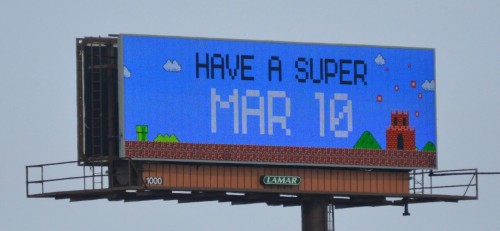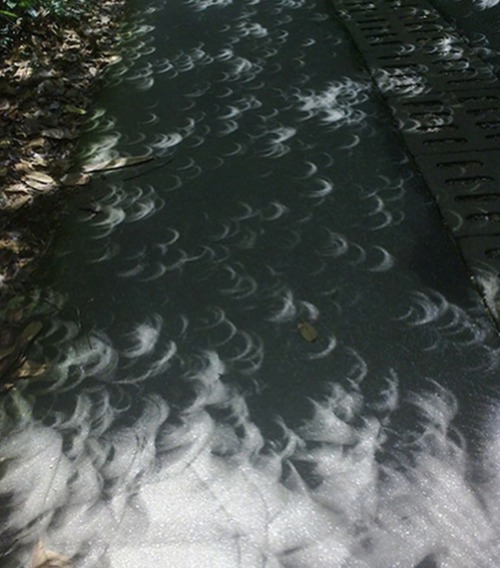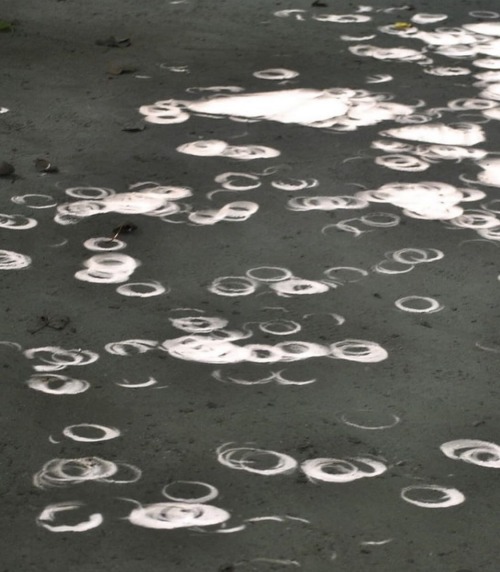I Promised You Some Lions! Let's Talk About Manes, Males, And Management.
I promised you some lions! Let's talk about manes, males, and management.
This is Tandie, the current male lion at the Woodland Park Zoo.

Notice anything odd about him? He's got one of those hilarious awkward teenager manes. Except... this cat is nine years old.

I was, of course, immediately curious.
Manes serve a lot of purposes for male lions, including being an indicator of health and fitness - it's actually a sexually selected trait and a social signal. Mane texture / hair quality / length is dependent on nutrition and the body having energy to grow (and carry around!) that much hair! The color is also a signal: males with darker manes have been found to have higher testosterone levels.
In one research report, wild males were much more likely to avoid a lion decoy when it had a longer or darker mane - but the girls really loved a dark mane. It's thought this is because a long, dark mane is an indicator of mate quality. Males with longer, darker manes have higher testosterone and were pretty healthy: meaning they had more energy for fighting, had a better chance of recovering if they got injured, and generally had a higher rate of offspring survival. Manes matter!
So, back to Tandie. He was actually born at the Woodland Park Zoo in 2014 alongside two brothers, to dad Xerxes and mother Adia.
This was Xerxes (rip).

Obviously, a very large, dark, lush mane on Xerxes here. So where did these blond muttonchops come from on his son?
I asked the zoo docents and got an answer that didn't make a lot of sense. They told me that after the three cubs grew into adolescents, they were moved to the Oakland Zoo together. But living together suppressed his testosterone, and he never grew a mane.
Hmmmm.
Here's a photo from 2016, when the brothers debuted at Oakland. They're a year and a half old in this photo.

(Photo Credit: Oakland Zoo)
And here's from an announcement for their third birthday.

(Photo credit: Oakland Zoo)
Okay, so these dudes obviously all were growing manes as of 2017. I think Tandie is the one on the left in the first photo, and laying down in the middle on the second. What happened?
I was just in the Bay Area for a zoo road trip, of course I went to Oakland and tracked down a docent to ask some questions.
It turns out that shortly after the brothers turned three, they started acting like adult male lions: they started scuffling regularly. It's a normal social thing for male lions to live in groups, called coalitions, but according to my lion experts there's generally a baseline level of some social jostling within them. It wasn't quite clear from what the docent said if they couldn't manage the boys together, or if they just wanted to avoid the scratches and small wounds that result from normal lion behavior. Regardless, they put all three of the boys on testosterone blockers in order to be able to keep them together as a social group.
Now, I don't know a lot about the use of hormone alteration as a form of captive animal management, except in the case of birth control. I don't think it's something that's unethical - there was just a webinar on it that I saw go by - but I don't think it's commonly done with big cats. Lions have kind of complicated reproductive cycles, and for instance, we've been learning that female lions can take much longer to come into estrus again than expected after coming off hormonal birth control.
In males, testosterone blockers (or being neutered) means they lose their manes. This is why a lot of rescues will do a vasectomy on their males instead of a neuter - it allows them to keep their mane and the social signals that accompany it.
Tandie returned home to Woodland Park Zoo after Xerxes passed in early 2022, and the docent told me all of the lions had been off their blockers "for while." I'd guess those things happened around the same time, since bringing the trio down to a duo at Oakland would reduce some of the social tensions.
Hormones are such interesting things, though. One of Tandie's brothers has a full mane again, and the other is still totally mane-less.


As for Tandie, his mane is growing back in, and it looks like he might rival his dad for length and coloration.
He started here, in February:

Yesterday:


What a difference four months (and maybe proximity to a girl) makes!
More Posts from Whyfakepockets and Others
The feel of toothless here is so unique. The shark like ridges to reduce drag is such a smart idea. Personally I think the live action redesign could have benefit from concepts like that. Real life elements and adaptations might have aided in grounding the dragons in realism and helped them fit in next to the actors.

All the dragons from the HTTYD stream. Detailed images below.
The designs from the original movie are basically perfect, which is why I didn't really dare to touch them... until a certain trailer dropped recently.
I'm a spiteful creature.
Anyway. Some ground rules. I tried to make these creatures overall a little bit more realistic and grounded without robbing them of the inherent whimsy that the originals had. All of them are tetrapods, so only 4 limbs max.

Nightfury
These guys have no more functional limbs to move on the ground. They are living stealth bombers. Silent fast fliers.
On the ground they flop around similar to seals, forming small colonies on top of tall cliffs.

Red Death
At a certain size it becomes unfeasible to fly for even a dragon. The Red Death stays on the ground using it's heavy armor and enormous size when raiding other dragon nesting colonies. it'as wings are more like spurs, to injure rivals in combat.

Gronkle
The original had a hummingbird style in flying , something that doesn't work for an animal of this size. My compromise is to make the wings rather stout and being able to be folded a lot.

Nadder
Easiest design, take a unfeathered theropod and combine it with a bearded dragon.

Shellfire
This was the last one I made on stream, it is one of the (in my eyes) worst designs from the shows, so a nice challenge to make it work a little better.
This guy is now a filter feeder, using its large horns to funnel water into its mouth.

Zippleback
Multi-headed dragons are really tricky. In my design I made one of the heads a parasitic male, similar to angler fish, that hitches a ride on the back of the larger female.

Monstrous Nightmare
One of the most classic dragons from the original movie. Lots of crocodilian influence here. The osteoderms on its back have pores from which it produces flammable secretions.

Razorwhip
A fast an agile dragon, but the original doesn't really show that in the head shape and all these spines don't help. I put some tapejarid influence into it.

Rumblehorn
The massive neck of this dragon doesn't work well in terms of aerodynamics, unless it's an inflatable display structure ;)

Whispering Death
The giant maw of this dragon is an even greater challenge, but when you give it the gular pouch of a pelican eel and turn these eyes into eye-spots, it works quite well.

And of course the Terrible Terror!
As you can see it's in my case a close relative of the nadder.

You can only reblog this today.






Solar Eclipse Shadows
These solar eclipse shadows form due to the distance between the sun and the leaves on the trees. The distance and the proximity of the leaves to one another cause for a "lensing" type effect, making the eclipse shadow clearer to the human eye.

Beautiful feather texture!
One of my favorite birds is the bittern and one of my favourite dinosaurs is troodon! That's why I combined them into one! By giving this prehistoric creature a marking inspired by this wonderful bird.




The Kickstarter for Other Worlds, my first ever book, is launching in about day!
Sign up here :) https://bit.ly/403C70b
Lots of lore and art from the Birrin world, including Pseudoraptors and Sagewings; creatures of the coastal dunes around the Valley of Two-Sky River, and survivors of the Fall.
Can’t wait! This is going to be amazing!





The Kickstarter for 'Other Worlds', my first ever book, is GO!
Filled with art from Subnautica: Below Zero, the Birrin Saga, and decades of my illustration and concept art.
I took no half-measures creating this book.
The Kickstarter link is here!
Their shapes and colours are so creative!

Styraphant ethnicity BIG POST! Basically just going over the main 'flavors' that all styraphants kind of fall into. More detail below the cut!
They can all interbreed and are the same species, but have a lot more genetic variation than human populations on Earth! There are about 6 main 'morphs', but that being said individuals with varied lineages may be a little hard to pin down. When in doubt the shape of ones crest is where most will look when trying to assume! Because that IS where most of the variation resides. Big list inbound.

Star. These are the dudes I've been drawin so far. They tend to inhabit around the center of their planets largest continent, in the more tropical zones. So like to live in wooded areas and lush vegetation.
Flame. These guys are named for the upswept tines on their crest. They are the most Northernly, enjoying mostly temperate climates and migrating as the seasons change to avoid chillier weather.
Fan. These guys are FUN. With large webbed tines on the crests of both males and females. They are darker due to their hot, arid home, so typically built to avoid sunburn.
Scallop. These guys are named because the edges of their crested are, in fact, scalloped. They range from temperate to tropical climates, tending to stick to places on the soggier side.
Disk. These guys have completely smooth crests! They are also the smallest variety, mostly due to their more seaborne nature. They have the widest range of climates and tend to move around the most by a wide margin.
Spade. These have a spade shaped face, obviously, with two large tines pointing directly upward. They are found in the colder, Southern continent, the only variety not found on the mainland. Their thickset frame helps them put up with the cold year round.
This is the gist! They cover a wide variety of crest and body type in these groups as they are pretty different!

Most differences come from the different regions each population has settled in as I'm also thinking that they are an older species. So they've had time to become more sculpted by their environments. They get along pretty well though, like I'm thinking it's odd to not associate with each other!
-
 originalsharktimetravel reblogged this · 1 week ago
originalsharktimetravel reblogged this · 1 week ago -
 officialsadomasochist liked this · 1 week ago
officialsadomasochist liked this · 1 week ago -
 iorekbyrinson liked this · 2 weeks ago
iorekbyrinson liked this · 2 weeks ago -
 wtfkay395 reblogged this · 2 weeks ago
wtfkay395 reblogged this · 2 weeks ago -
 sillimancer reblogged this · 3 weeks ago
sillimancer reblogged this · 3 weeks ago -
 unreluctantone liked this · 3 weeks ago
unreluctantone liked this · 3 weeks ago -
 sillyjimjam reblogged this · 3 weeks ago
sillyjimjam reblogged this · 3 weeks ago -
 spoonyglitteraunt liked this · 3 weeks ago
spoonyglitteraunt liked this · 3 weeks ago -
 ellanarose reblogged this · 3 weeks ago
ellanarose reblogged this · 3 weeks ago -
 corneliusgaiman liked this · 3 weeks ago
corneliusgaiman liked this · 3 weeks ago -
 ryuka-red liked this · 3 weeks ago
ryuka-red liked this · 3 weeks ago -
 bee-dazzle reblogged this · 4 weeks ago
bee-dazzle reblogged this · 4 weeks ago -
 bee-dazzle liked this · 4 weeks ago
bee-dazzle liked this · 4 weeks ago -
 crispysharkarcade liked this · 4 weeks ago
crispysharkarcade liked this · 4 weeks ago -
 gigglesnorts liked this · 4 weeks ago
gigglesnorts liked this · 4 weeks ago -
 danielle-nikiforov liked this · 4 weeks ago
danielle-nikiforov liked this · 4 weeks ago -
 rikuprinceofthedawn liked this · 1 month ago
rikuprinceofthedawn liked this · 1 month ago -
 crinj-central reblogged this · 1 month ago
crinj-central reblogged this · 1 month ago -
 mykola3 liked this · 1 month ago
mykola3 liked this · 1 month ago -
 slaychill reblogged this · 1 month ago
slaychill reblogged this · 1 month ago -
 slaychill liked this · 1 month ago
slaychill liked this · 1 month ago -
 creatures-such-as-these reblogged this · 1 month ago
creatures-such-as-these reblogged this · 1 month ago -
 a-peculiar-potoo reblogged this · 1 month ago
a-peculiar-potoo reblogged this · 1 month ago -
 a-peculiar-potoo liked this · 1 month ago
a-peculiar-potoo liked this · 1 month ago -
 i-havenothingelsetopost reblogged this · 1 month ago
i-havenothingelsetopost reblogged this · 1 month ago -
 i-havenothingelsetopost liked this · 1 month ago
i-havenothingelsetopost liked this · 1 month ago -
 mapplestrudel reblogged this · 1 month ago
mapplestrudel reblogged this · 1 month ago -
 root-interface reblogged this · 1 month ago
root-interface reblogged this · 1 month ago -
 plasma333 liked this · 1 month ago
plasma333 liked this · 1 month ago -
 theowlishlibrarian reblogged this · 1 month ago
theowlishlibrarian reblogged this · 1 month ago -
 izzyphobix liked this · 1 month ago
izzyphobix liked this · 1 month ago -
 whyfakepockets reblogged this · 1 month ago
whyfakepockets reblogged this · 1 month ago -
 dsudis liked this · 1 month ago
dsudis liked this · 1 month ago -
 tracingstardust liked this · 1 month ago
tracingstardust liked this · 1 month ago -
 a-fish-bee reblogged this · 1 month ago
a-fish-bee reblogged this · 1 month ago -
 aktionist liked this · 1 month ago
aktionist liked this · 1 month ago -
 bus-noises reblogged this · 1 month ago
bus-noises reblogged this · 1 month ago -
 thedruidocelot liked this · 1 month ago
thedruidocelot liked this · 1 month ago -
 veal-exe reblogged this · 1 month ago
veal-exe reblogged this · 1 month ago -
 hi-there-cake liked this · 1 month ago
hi-there-cake liked this · 1 month ago -
 the-king-of-tartarus reblogged this · 1 month ago
the-king-of-tartarus reblogged this · 1 month ago -
 under--the--radar reblogged this · 1 month ago
under--the--radar reblogged this · 1 month ago -
 megantron13 liked this · 1 month ago
megantron13 liked this · 1 month ago -
 gingergirl66 reblogged this · 1 month ago
gingergirl66 reblogged this · 1 month ago -
 thelongestway liked this · 2 months ago
thelongestway liked this · 2 months ago -
 pyronecromancy liked this · 2 months ago
pyronecromancy liked this · 2 months ago


